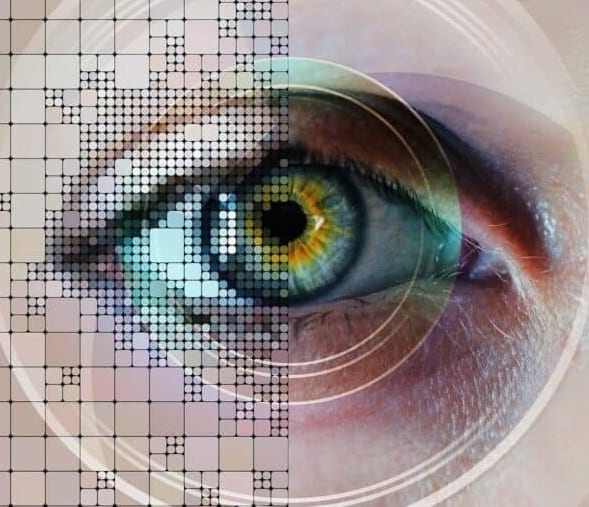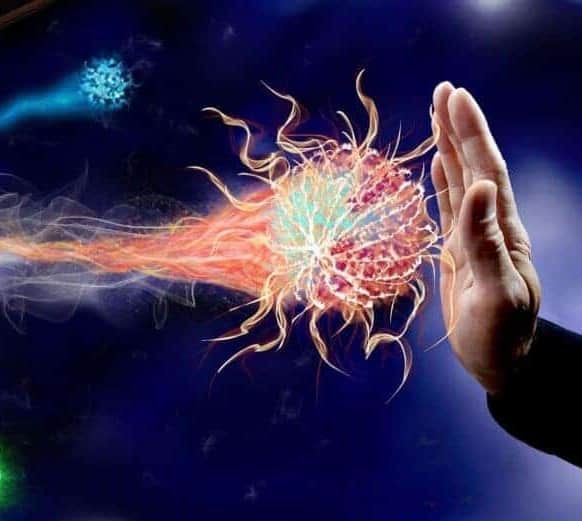Eye Movement Desensitisation and Reprocessing (EMDR) therapy works as a treatment method for various psychiatric conditions. The treatment involves standardised procedures, including focusing simultaneously on traumatic images, thoughts, emotions, and bodily sensations.
EMDR therapy employs bilateral stimulation commonly in the form of repeated eye movements. However, sometimes bilateral sound stimulation or tapping contralateral parts of the body can be used.
EMDR helps process the negative images, emotions, beliefs, and body sensations associated with traumatic memories that seem to be stuck. Initially, the therapy was intended to treat trauma, such as PTSD (Post-Traumatic Stress Disorder). However, therapists also use it as a therapy for anxiety, depression, and other psychiatric disorders.
Schedule an appointment with our specialist in EMDR
Call CHMCThe precise mechanism of EMDR action is still unknown. It seems that several mechanisms are at work, making the treatment effective. Nevertheless, EMDR has proven to be very helpful in reducing/terminating distressing symptoms and healing trauma. There is a clearly defined manual of how an EMDR-trained and educated psychologist performs the therapy. The EMDR treatment requires several sessions, 60 minutes each.
The Origins of Eye Movement Desensitisation and Reprocessing (EMDR) Therapy
In the late 1980s, Francine Shapiro discovered a link between eye movements and persistent disturbing memories. She noted that, while experiencing disturbing feelings, her eyes started to move fast. Consequently, this personal insight initiated her lifelong research and development of Eye Movement Desensitization and Reprocessing (EMDR) therapy.
EMDR therapy has been validated through double-blind studies and is an evidence-based treatment method. The therapy is approved by the American Psychological Association, the US Department of Veterans Affairs and the World Health Organization (WHO).
Trauma and PTSD. The Collapse of Psychic Defence

EMDR therapy was originally developed for the treatment of PTSD (Post-traumatic Stress Disorder). To understand the development of PTSD we must look closer at the human psychic structure using psychoanalytical terms.
Psychoanalytic theory understands human behaviour as an effect of dynamics between the mental parts of the psyche, including the Id, Ego, and Superego. The psychic trauma in PTSD appears suddenly and excessively, breaking the psychic balance. A violent influx of traumatizing events exceeds the human capacity to face or integrate feelings. Violent traumatic events such as accidents, abuse, and disasters break through the Ego defence mechanisms. As a result, people store traumatic memories in their raw, unprocessed form. EMDR therapy allows the brain to resume its natural healing process and “clears” unprocessed trauma memories.
How EMDR works?
According to the EMDR theory, memory networks are the foundation of mental health and pathology. Traumatic or distressing events can disintegrate the brain’s information processing, which leads to the experience becoming maladaptively stored in the brain along with the physical sensations, attitudes and feelings encountered at the moment of the event. These distressing recollections are stored separately and cannot connect to more adaptive information.

Our brain has a natural way of recovering from traumatic memories and events. Therefore, traumatic experiences often resolve naturally. However, in some cases, people cannot handle the consequences (symptoms) of trauma without professional help.
The fight-and-flight response is our innate reaction to stress. When disturbing memories are “unprocessed” and remain disturbing, upsetting images, thoughts, and emotions can create an overwhelming feeling of being back in the moment. Eye Movement Desensitization and Reprocessing Therapy helps process these memories and allows for natural healing to resume. However, successful EMDR therapy is not about eradicating traumatic memories. People will still remember the trauma. Yet, it will be without triggering the fight and flight response.
EMDR: the therapeutic approach

EMDR therapy for PTSD, anxiety, and depression is based on dual focus —eye movements or other distractions while focusing on the traumatic memory. The patients descend into the unconscious space of their psyche while still keeping contact with their consciousness. The opaque “wall” between the unconsciousness and consciousness gets semi-transparent. Therefore, such a state allows access to the traumatic memories, making them conscious and reducing their “destructive energy.”. EMDR therapy initiates the healing process, allowing the patient to view the traumatic memories differently. Consequently, those memories do not distress the patient anymore. The EMDR therapy usually takes place in 60-minute sessions.
Therapeutic phases of EMDR
Eye Movement Desensitization and Reprocessing therapy is structured. The “classical” EMDR therapy evolves through eight phases: 1) history taking and treatment planning, 2) preparation, 3) assessment, 4) desensitization, 5) installation, 6) body scan, 7) closure, and 8) re-evaluation.

1) History taking and treatment planning
EMDR Therapy treatment begins with Phase 1, which is the history-taking phase. The goal of Phase 1 is to gather information to create an AIP-informed case conceptualization and treatment plan. The therapist determines which memories to target for reprocessing and in what order. Phase 1 is also the starting point for developing a therapeutic alliance and the emergent therapeutic relationship. The therapist’s stance during Phase 1 is non-judgmental, supportive, and understanding of the client’s clinical complaints. Inadequately processed memories triggered by daily life demands are the driving force behind the patient’s symptoms. The therapist’s ability to attune to the patient and titrate the intensity of history-taking is crucial to Phase 1’s success.
Typically, Phase 1 for a PTSD or adjustment disordered patients is limited to a few sessions. However, for patients with multiple symptoms over a broad context, dissociative symptoms, or personality difficulties, Phase 1 may take longer.
Indicators and procedures
During Phase 1, the therapist uses indicators such as Direct Questioning (DQ), Floatback Technique (FB), and Affect Scan (AS) to identify the network of memories. The therapist also searches for indicators of inadequately processed and maladaptively encoded memory. They are the nodes in EMDR Therapy and contain past sensory information, thoughts, and emotions influencing the present. Node activation generates symptoms in the present.
2) Preparation

Phase 2 of EMDR Therapy called the preparation phase, is about determining if the client is ready for processing. The therapist explains the EMDR model and addresses any concerns the client may have about the treatment. The crucial point is the creation of a therapeutic alliance between the clinician and patient.
During Phase 2, the therapist offers resourcing interventions as needed. The required number of sessions in this phase varies from person to person. A positive experience with bilateral stimulation and subsequent reprocessing sessions appears to lead to a favorable outcome in the treatment of PTSD patients.
3) Assessment

During this phase, patients are asked to access each target in a controlled and standardized way to be processed efficiently. The EMDR therapist identifies various aspects of the target to process. In the first step, the patient must select a specific well-memorized image from the target event. Then he must select a negative self-confidence statement related to the event.
Even if the patient intellectually understands that the statement is false, it doesn’t mean that he integrated it emotionally. These negative beliefs are verbalizations of disturbing feelings that still persists. The patient then chooses a positive self-statement. This statement should include an inner sense of control such as “I can do it”. If the dominant emotion is fear, such as after a natural disaster, the negative perception may be “I am in danger”. The positive perception can be: “Now I’m safe”. The “I am in danger” fear can be viewed as a negative perception.
Cognitive validation
While the danger is over, the fear is trapped in the memory. Positive perceptions should reflect what is actually relevant in the present. At this point, the therapist asks the patient to rate how true the positive beliefs are, using a 1 to 7 Validity of Cognition scale. “1” corresponds to “completely false,” and “7” corresponds to “completely true.” It is important to give a score that reflects what the person “feels” rather than “thinks.”.
Subjective disturbance
We can logically “know” that something is wrong, but we are most driven by how it “feels.” The assessment phase also identifies negative emotions (fear, anger) and physical sensations (tightness in the stomach, cold hands) associated with the target. Clients also rate their negative beliefs using a different scale called the Subjective Units of Disturbance (SUD) scale. This scale, which rates emotion from 0 (no disturbance) to 10 (worst), is used to rate the disturbance the client is experiencing. The goal of EMDR treatment in the next phase is to decrease the SUD score for disorders and increase the VOC score for positive beliefs
4) Desensitization

In the desensitization phase of EMDR, the therapist guides the patient through bilateral stimulation in order to help him to identify his negative thoughts, memories, and feelings. At the beginning of this phase, the therapist instructs the patient on three types of bilateral stimulations (BLS). The therapist may refocus on the traumatic memory or move on if the emotion is no longer triggered. The patient reports changes after each set of bilateral stimulation. After having identified the negative thoughts and feelings, “the installation” of positive beliefs takes place.
Bilateral stimulations (BLS) techniques
The most effective technique is “eye movement.” Therapists often employ bilateral stimulation, engaging eye movements from side to side. The speed of stimulation is in general fast, with one movement per second. Eye movements may be similar to rapid eye movement (REM) sleep, which occurs as we dream. If the “eye movement” is not feasible, the therapist can use tapping, auditory pulses, or blinking lights.
5) Installation

When desensitization is complete, the installation phase begins. In this phase, the positive beliefs that were expressed in the assessment phase are used to replace the original negative ones. In this phase, the patient strengthens his positive beliefs connected to the targeted traumatizing event. As the effects of the desensitization phase help the client process traumatic memories and regain a sense of power and control over their situation, these positive ideas are reinforced and used to overcome the past. While it may not be possible to Gette patient fully to the most confident rating on the VOC scale of a positive belief (i.e., to believe wholeheartedly that it is true), it is possible to reach a point where next steps can be imagined and followed. From here, self-confidence and healthier feelings can be developed and internalized further.
6) Body scan

content
In this phase, the therapist will ask the client to think about the original traumatic memory and to pay attention to any physical sensations that appear. The trauma might remain physiologically stored in the body, causing various physical symptoms such as pain, numbness, heart racing, etc. It is important for the patient to understand the reason for the body scan in order to create the connection between feelings and body. The body scan helps to identify the level of distress, whether it has been lessened or completely neutralised. The aim is to achieve no physical impact when the memory is brought to mind, to be sure the dynamics of the encapsulated trauma are taken out in all senses, mental, emotional, and physical. If a sensation is reported that is uncomfortable, further processing will take place until the discomfort subsides. Once the symptoms vanished, the reprocessing is complete.
7) Closure

The closer phase in EMDR is important when a memory is not fully processed. Due to the complex nature of a trauma, it can take different amounts of time to fully process a memory to resolution in EMDR. Some people can process several memories in one session, while others may need several sessions for one memory.
It may happen that the therapist and patient end the session while not being able to fully process a memory. In such a case, the therapist implements a series of exercises to return the patient to a calm state. The goal of the closer phase is to ensure that the patient can return to their normal life without feeling overwhelmed or distressed by the trauma. By taking care to end sessions in a calm and peaceful manner, the therapist can help the patient to continue making progress in future sessions.
8) Re-evaluation

Phase 8 of EMDR is re-evaluation. This phase happens after the initial visit. The therapist evaluates whether positive effects have been maintained and if any new memories have emerged. Re-evaluation is crucial to determining the success of the treatment over time.
EMDR can bring relief almost immediately. But it’s important to complete all eight phases of treatment. Completing the full treatment is as important as finishing a course of antibiotics.
When EMDR is complete, attention has been brought to past memories that contribute to the problem. Present situations that cause distress have also been addressed. Finally, the therapist identifies the skills the client needs for the future.
It’s crucial to seek treatment from a therapist trained in EMDR. Positive outcomes depend on specialized training and professional consultation. With the guidance of a trained therapist, emotional healing and increased confidence for the future are possible.
EMDR. Reprocessing memory networks
EMDR theory claims that positive change results from memory reprocessing due to the alteration of memory storage and the connection to adaptive memory networks. EMDR therapy identifies and processes maladaptive stored memories by boosting the ingrained information processing system using standardized protocols and techniques. These techniques comprise bilateral dual attention stimulation, such as alternating (beep) tones, taps, or eye movement.
Concepts of EMDR
Three central concepts that underlie the theory and practice of EMDR treatment are
(1) memory networks and unprocessed memories,
(2) information processing, and
(3) associative channels.
Memory networks
According to the EMDR psychology theory, memory networks are the foundation of mental health and pathology. Traumatic or distressing events can disintegrate the brain’s information processing, leading to the experience becoming maladaptively stored in the brain along with the physical sensations, attitudes, and feelings encountered at the moment of the event. These distressing recollections are stored separately and cannot connect to more adaptive information. This concept is central to trauma therapy, where the goal is to reintegrate these fragmented memories. Approaches like German EMDR Therapy in Dubai apply these principles to help individuals process unresolved trauma and restore emotional balance effectively.
Unprocessed memories of traumatic experiences and other, more frequently occurring adverse life events, such as childhood household dysfunction, fights and quarrels, abandonment, and humiliations, are viewed as the basis of pathology. This pathology excludes organic cases of injury, genetic defects, or toxicity.
Reprocessing memories and information
Processing refers to forming functional linkages between networks of information amassed in the brain. Within the framework of EMDR psychology, an EMDR therapist assesses the troubling memory by evoking images, thoughts, feelings, and body sensations associated with the memory.
In EMDR, memory processing is triggered using standardized procedures of dual attention bilateral stimulation, such as tones, eye movements, or taps. This method shares similarities with systematic desensitization, as both aim to reduce emotional distress linked to traumatic memories. The EMDR therapy facilitates the process of reducing the morbidity of the “rough” stored traumatizing events by making them conscious and integrating them with adaptive information. It also addresses the sensitization meaning of trauma, helping the brain reprocess experiences that were once overwhelming.
Associative channels
Encoded recollections are kept in networks with neural connections to occurrences with similar information (e.g., thoughts, physical sensations, senses, emotions, and views).
Thus, EMDR therapy aims to unlock associative channels and locate interconnected memory networks. Subsequently, processing induces learning and the formation of positive associations in the form of new connections to appropriate memory networks.
Adaptive Information Processing (AIP) model
The AIP model claims that successful EMDR therapy results in the arising of the targeted dysfunctional memory from its remote state to become integrated with the broader comprehensive memory networks that form the entirety of the person’s life experiences.
Eye movement desensitization and reprocessing (EMDR) therapy features the Adaptive Information Processing (AIP) model. AIP considers unprocessed memories of traumatic or adverse life experiences as the cause of pathology, except for any organic pathology, such as toxicity, physical injury, and genetic factors. Memory mechanisms physically encode life experiences as memories, and associative neural networks store those memories. These associative networks create a significant foundation for the person’s perception of new experiences and critically influence current interpretations, feelings, and behaviours.
Processing & integration of “normal” memories
Under normal circumstances, the information processing system incorporates fresh experiences into memories of earlier ones, preserving the information that is beneficial and scrapping that which is not. Subsequently, interconnected memory networks store this information merged with the corresponding emotional states to guide the individual’s future actions.
EMDR. Healing trauma through reprocessing and integration of negative memories
Yet, increased emotional disturbance characteristic of negative experiences can interfere with the processing system’s functioning. In this case, the memory networks store the unprocessed recollections along with the feelings, attitudes, and mindsets relevant to the time of the adverse event.
Adverse experiences comprise not only major traumatic events but also the more frequently occurring experiences of household disruption, humiliation, abandonment, and rejection. Memory networks store such events in a way that does not let those adverse experiences link to more adaptive information. Thus, it prevents proper learning from taking place.
Consequently, if a current event activates memory networks of dysfunctionally stored information, the physical sensations, emotions, and perceptions inherent in the unprocessed adverse memory arise automatically. When this happens, “the past becomes present.” These negative feelings and attitudes affect the person’s reactions and become the causes of relationship difficulties, reduced self-efficacy and self-esteem, and facilitate the onset of psychiatric co-morbidities such as depression, anxiety, insomnia or even psychosis.
What conditions does EMDR treat?
EMDR is a therapeutic procedure widely employed in clinical settings. Subsequently, EMDR developed into the treatment of various conditions, including psychological and physical disturbance as the consequence of any earlier adverse experience perceived by the individual as disturbing and traumatic. EMDR therapists employ the EMDR technique to treat psychiatric conditions such as depression, specific phobias, social anxiety, panic attacks, adjustment disorder, OCD, and eating disorders (anorexia and bulimia). It has also proven effective for the treatment of personality disorders. EMDR can also be a part of marriage therapy. For individuals without burnout, EMDR can serve as a stress-decreasing strategy. Research has demonstrated that EMDR reduces job stress, anger, and subjective distress.
EMDR (Eye Movement Desensitisation and Reprocessing) Therapy. Summary
EMDR is a therapeutic procedure used to vastly treat mental health and personality issues due to traumatic or disturbing memories from adverse events in the past. The main goal of EMDR is reprocessing those memories and dismantling their morbid influence. EMDR is best known for its effectiveness in treating Post-Traumatic Stress Disorder (PTSD), but its use has extended to many other conditions.
EMDR therapy is an integrative psychotherapeutic treatment that views current mental health issues as stemming from adverse experiences in the past. Neurophysiological networks have dysfunctionally stored these negative experiences as unprocessed memories. EMDR therapy employs standardised techniques, including bilateral dual attention stimulation, to activate information processing to improve the individual’s mental health.
The previously disturbing memory is now stored adaptively, and the person can recall it without negative emotions, attributions, or physical sensations.
How to choose an EMDR Therapist
Finding an EMDR therapist might be a complicated journey. Firstly, your therapist should be a psychologist additionally EMDR-trained, licensed, and certified in using this treatment technique. The second important aspect is compatibility and safety. Look for a therapist who you feel comfortable with, can trust, and can build a relationship with. This means looking for a certified EMDR therapist who has competence in the issues you are struggling with, a cultural fit, and a personality that works for you. It’s best to talk to a trained medical provider, including an EMDR therapist, before starting EMDR therapy. They can provide more information and answer any questions you may have.

Diana Tutschek
Clinical Psychologist, Marriage & Family Counselor
(British Board)
Call +971 4 457 4240


